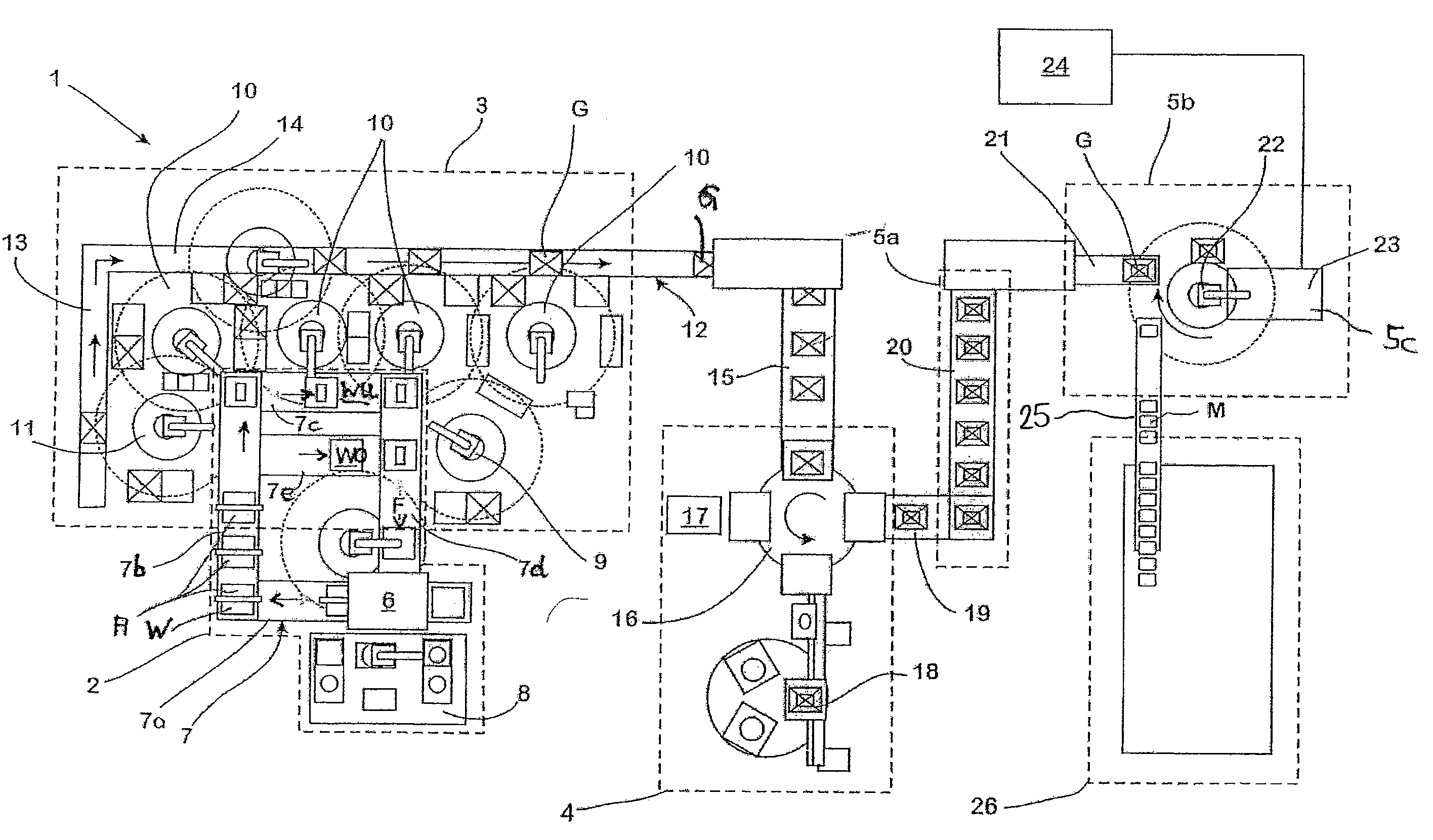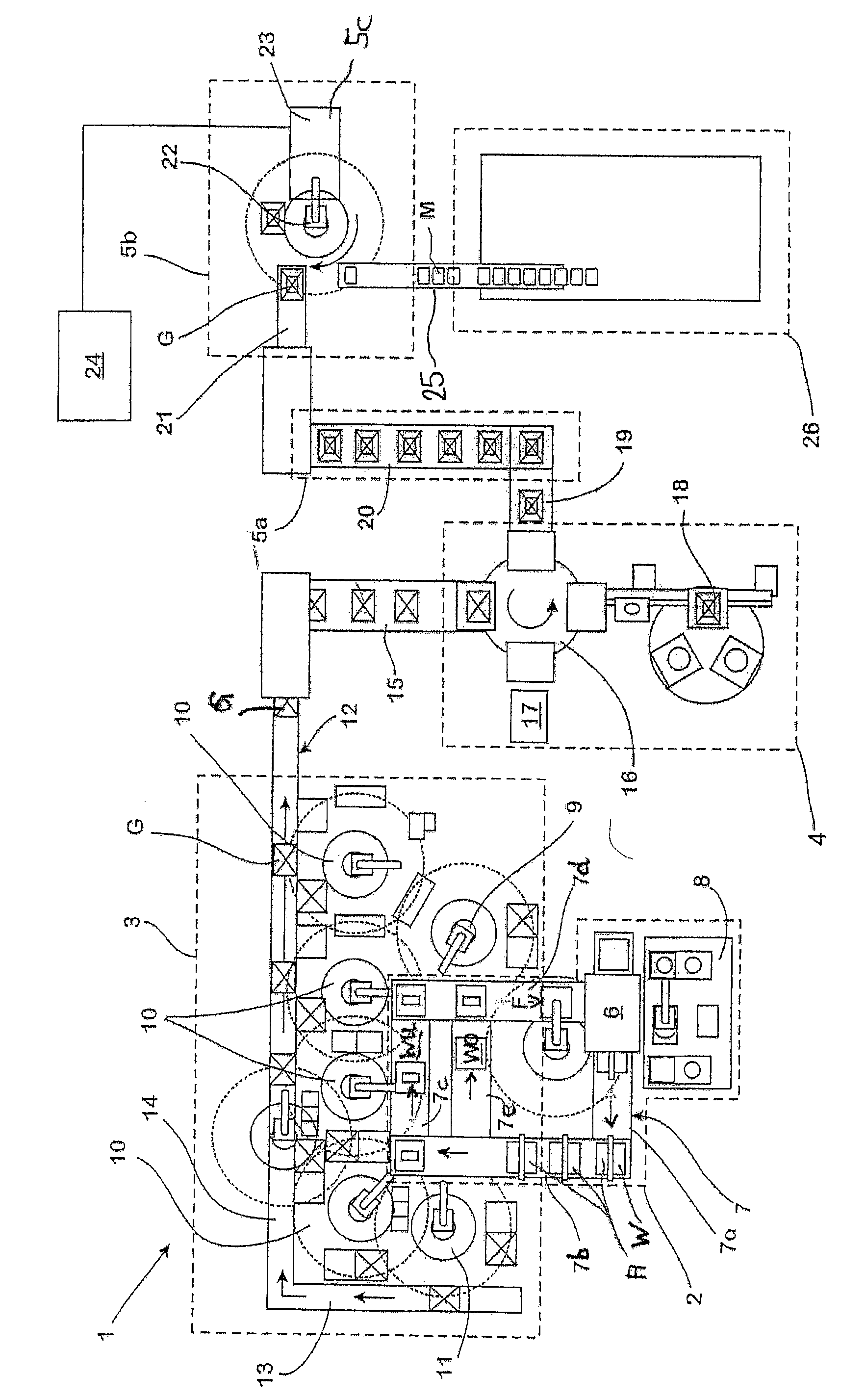Production line and method for the production of cast parts, from a metallic melt, in particular a light molten metal, which takes place in a continuous cycle
a production line and metallic melt technology, which is applied in the direction of moulding machine components, mould handling equipment, foundry moulding apparatus, etc., can solve the problems of large quantity of sand and long conveying distances, loss of availability, and increased technical expenditure caused by a number of machines and tools for core production, etc., to achieve high loading capacity, economic and flexible, and complex form
- Summary
- Abstract
- Description
- Claims
- Application Information
AI Technical Summary
Benefits of technology
Problems solved by technology
Method used
Image
Examples
Embodiment Construction
[0067]The invention will be described in more detail hereinafter with reference to an embodiment.
[0068]The single FIGURE schematically and in plan view shows a production line 1 for fully automated production of motor units made of an aluminium alloy. The production line comprises a core production unit 2 for producing casting cores, a mould assembly unit 3 for assembling casting moulds G formed as core packages, a casting unit 4 for filling aluminium melt into the casting moulds G, a cooling unit 5a for solidifying the molten metal contained in the casting mould G and a demoulding unit 5b for destructive removal of the respective casting mould G and a quenching unit 5c of the cast part M.
[0069]The core production unit 2 comprises a core shooting station 6 and a transporting device 7 constructed as a conveyor section. The transporting device 7 is divided into four sections 7a, 7b, 7c and 7d which are arranged at a right angle to each other such that, in plan view, they form the side...
PUM
| Property | Measurement | Unit |
|---|---|---|
| cycle time | aaaaa | aaaaa |
| time | aaaaa | aaaaa |
| cohesion | aaaaa | aaaaa |
Abstract
Description
Claims
Application Information
 Login to View More
Login to View More - R&D
- Intellectual Property
- Life Sciences
- Materials
- Tech Scout
- Unparalleled Data Quality
- Higher Quality Content
- 60% Fewer Hallucinations
Browse by: Latest US Patents, China's latest patents, Technical Efficacy Thesaurus, Application Domain, Technology Topic, Popular Technical Reports.
© 2025 PatSnap. All rights reserved.Legal|Privacy policy|Modern Slavery Act Transparency Statement|Sitemap|About US| Contact US: help@patsnap.com


